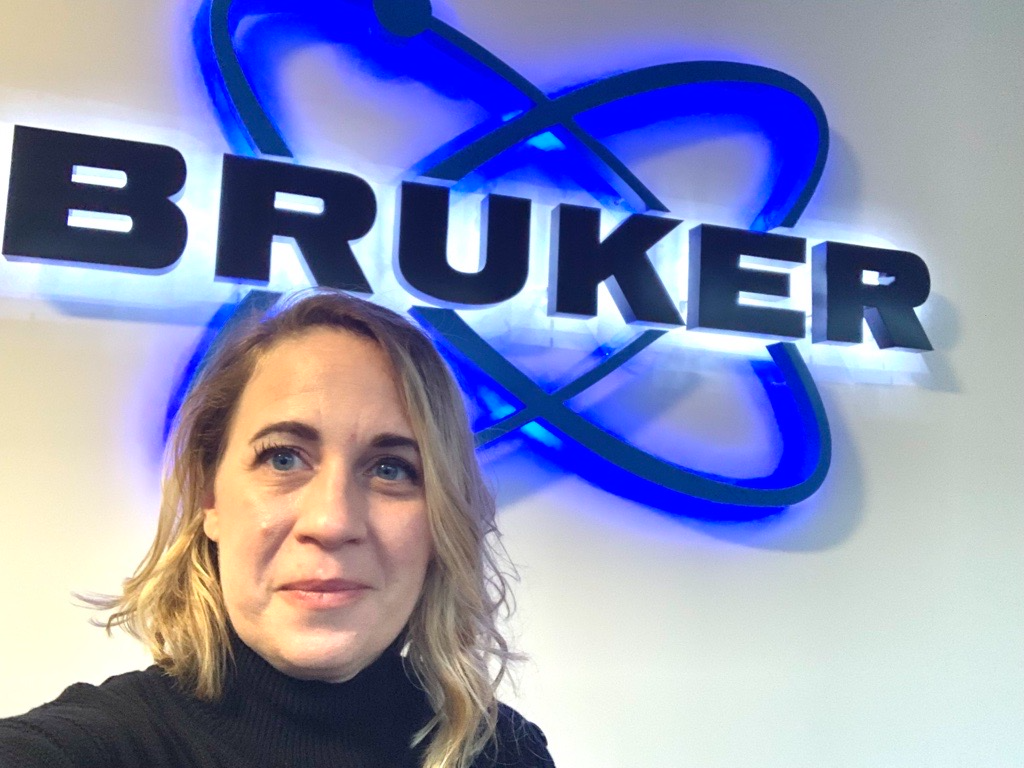Discover the forefront technologies fueling innovation in plasma proteomics in this episode of omg OMx, Bruker's science-driven podcast. Join host Kate Stumpo and Daniel Hornburg, Seer's VP of Proteomics, as they explore cutting-edge techniques such as nanoparticle-based enrichment and mass spectrometry refinements that enable unbiased, comprehensive, and rapid proteomics analysis. Read selected highlights from the episode, or watch the full episode below.
Daniel Hornburg | omg OMx Podcast | Ep. 4
Your diverse interests, experiences, and exposure to different scientific fields have likely equipped you with valuable insights. As someone who has navigated this terrain, how would you guide someone who desires to make an impact in science but is uncertain of the path to take?
For a start; join our scientific community and contribute. Science is compelling and connects across borders and language barriers. My recommendation is to follow your curiosity and do what excites you because working on the topics that you love to work on will be the fuel for your motivation and you moving forward.
It's important to remember that research is an unpredictable journey, and outcomes may not always align with your expectations. Most of the time, things do not work out as anticipated because, with every step and every day you do research, you are stepping into new undiscovered territory and the outcomes are often uncertain. Staying motivated and engaged is not easy because it does not always work out as expected.
You also want to be a little strategic and consider where you want to be. If you want to become an academic, consider having a more focused biology as this is what people seek. Seek guidance from peers and mentors who have already achieved the level you aspire to, and connect with enablers in your chosen area of study to help you take the next step.
Have you been able to harness any of those eureka moments, or 'OMG' moments, where something comes together, and you have the next bright idea?
These are the moments you want to keep close to you because they are the strong motivators that keep you moving forward. I think the fascination with the complexity of nature was always my 'OMG' moment.
When I joined Mathias Mann's lab during my Ph.D., I was exposed to new mass spectrometry technologies. You take just a few micrograms of a biological sample, and you get tens of thousands of molecules. You can see all these different moving parts and understand how they construct life. The data allows you to address disease-specific questions, which is super exciting.
A good example is what has become possible with new AI tools like chatGPT. This is how science and technology can move forward. It is the unexpected, these eureka moments. ChatGPT connects knowledge and builds context from vast information, which can be used in research. I think there is more to come, and we are only scratching the surface of what's possible. It is a fascinating time to do research.

Image credit: Bruker Life Sciences Mass Spectrometry
Can you shed some light on the challenges in the plasma proteomics field, and explain how Seer is addressing them in a novel and significant way?
Proteins are the functional entities in cells. They define the shape of a cell, how they interact with other cells, and they act as signaling molecules. They define the phenotype. Phenotypes are very complex, directly linked to the complexity of biochemistry, making protein analysis exceptionally intricate.
We also have the challenge that proteins have very different abundance ranges and concentrations. This means that small concentrations will be much harder to identify as you dive deeper into a biosample than the previous one.
Seer has built a technology where you can dive deep into the plasma proteome and other complex biosamples by compressing vast amounts of information into a more manageable form to the downstream detector, such as a mass spectrometer.
Our approach involves engineering nanoparticles with specific surface properties that interact with the proteome, forming complex molecular assemblies called protein coronas. These assemblies can be selectively tuned to capture specific subsets of the proteome's physical and chemical space, allowing information to be compressed for mass spectrometry analysis without the need for sub-selecting specific proteins.
We have developed a core technology that provides a scalable, automated, and accessible workflow for biosample analysis. This approach enables you to use the latest, greatest mass spec radar technology to get the complexity of the molecular information captured on the product's surface.

Image credit: Bruker Life Sciences Mass Spectrometry
The field of plasma proteomics faces numerous challenges that can limit progress and discovery. What are some of the most significant hurdles currently facing the field, and what steps can be taken to overcome them?
The historic challenge is combining the depths of coverage and the throughput. Another challenge is how we incorporate post-translational modifications and unique protein structures to generate more comprehensive data and biological meaning.
Every protein is probably present at some time point in a different so-called proteome form. It is a different molecular entity that may have a particular role in a specific disease. This needs to be considered in the sample preparation, the mass spec processing of the peptides, and in the data and biological interpretation. This is something that I think will become increasingly important and will allow us to add biological meaning to the generated data.
Another challenge is getting the community closer together. We will not have the genomic, proteomics, and metabolomics community in the future, but it will be a community of people who want to dissect life's molecular composition.
To truly understand how life works and how it is obscured in the context of disease, we must bring these communities together and the technologies and the data insights. This will fundamentally transform how we can understand biomedical research or progress in biomedical research to develop more effective diagnostic and therapeutic strategies for complex diseases.
What are your greatest hopes for this year and Seer?
The product has been in the hands of customers for a while now. We will see the first publications in peer review journals. This is very exciting, not only because we see how people use it to answer biological questions, but also for people working at Seer, seeing what people can do with the technology.
I am sure they will do things we did not anticipate, which will be another eureka moment. We want to learn, get feedback, and understand what works well but we also want to understand what we should improve.
The questions we will ask are: What is next? Where can we take the technology? What are the pain points currently when you want to investigate a disease? How can we help? How can we team up as a community?
This is super exciting because we are working and bringing technologies together and then seeing what great insights we can generate.
About the speaker

Daniel Hornburg, Seer's VP of Proteomics
Daniel is an accomplished scientific leader in precision omics, utilizing a blend of academic and industry experience to effectively develop and implement multi-omics solutions, with proven hands-on and leadership experience in analyzing the proteome, metabolome, lipidome, with mass spec and interpreting molecular data through customized machine-learning strategies. He has a strong background in driving technology advancements and uncovering new biological insights in fast-paced environments such as startups and early-stage companies.

omg OMx host: Kate Stumpo, Senior Market Manager at Bruker
LinkedIn
About Bruker Life Sciences Mass Spectrometry

Discover new ways to apply mass spectrometry to today’s most pressing analytical challenges. Innovations such as Trapped Ion Mobility (TIMS), smartbeam and scanning lasers for MALDI-MS Imaging that deliver true pixel fidelity, and eXtreme Resolution FTMS (XR) technology capable to reveal Isotopic Fine Structure (IFS) signatures are pushing scientific exploration to new heights. Bruker's mass spectrometry solutions enable scientists to make breakthrough discoveries and gain deeper insights.